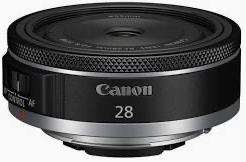I've seen your comparisons and I don't disagree with them; the proof is clearly in the pudding. The 14-35, with all of its distortion, is still an impressively sharp lens in the corners, so I'm largely not as concerned with perfect optical correction (as much as I'd like it).I have yet to see anyone post convincing evidence (or any evidence at all, for that matter) that digital correction is worse than optical correction for geometric distortion. But somehow, people are just sure it must be.
However, from a purely theoretical standpoint, optical correction allows infinite information to be retained. That is, glass is not converting the light to digital values and then doing some math on those values to produce a corrected image. A camera sensor does that. The ultimate result when correcting distortion digitally is going to be limited by the amount of resolution you have to "fill in the blanks" when squeezing/de-squeezing the image. That said, even if you have a 1MP image and do your de-squeeze, you're not trying to fill in extra MP worth of information; you're still only targeting a 1MP end result. So, any "missing" information that was not resolved, shouldn't matter/be visible, because the start and end size of the image are the same...? Maybe I'm confusing myself here, but it made sense in my head.
Upvote
0

